DNA Damage/DNA Repair
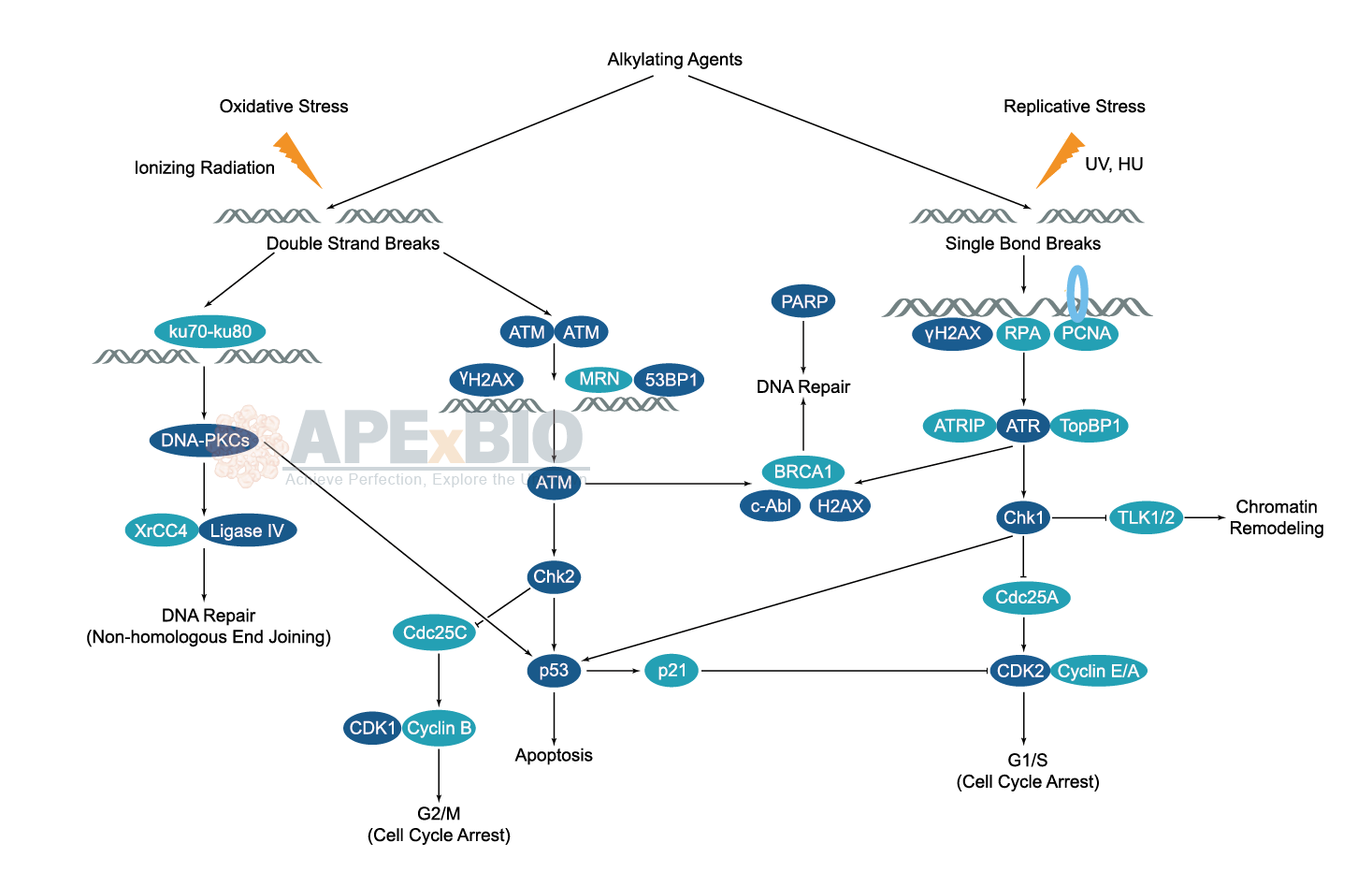
The DNA in a human cell receives tens of thousands of damages per day due to both external (exogenous) and internal (endogenous) stress. The exogenous damages are caused by chemical contamination, UV light, ionizing radiation and alkylation/methylation etc, while the endogenous damages are coming from oxidation, alkylation and hydrolysis of bases etc. Since single strand and double strand breaks of DNA will occur after the damage, unrepaired DNA damage leads to cell senescent, apoptosis and malignancies etc. To overcome this threat, cell has developed DNA damage response, to detect DNA damage and mediate its repair.
DNA repair involves multiple mechanisms such as mismatch, base excision, and nucleotide excision repair etc. A group of proteins and pathways are participated in those processes. ATM/ATR kinases and DNA-PK are crucial for the detection of the DNA damage. Chromatin remodelers regulate chromatin accessibility for the DNA repair factors to function. RPA, Rad51 and the fanconi anemia proteins act directly on repairing the DNA damage. p53 network, the RAS GTPase superfamily, and the ubiquitin system also play important part in the DNA damage response. Aberrant DNA damage response is linked to aging, cancer and immune diseases.
-
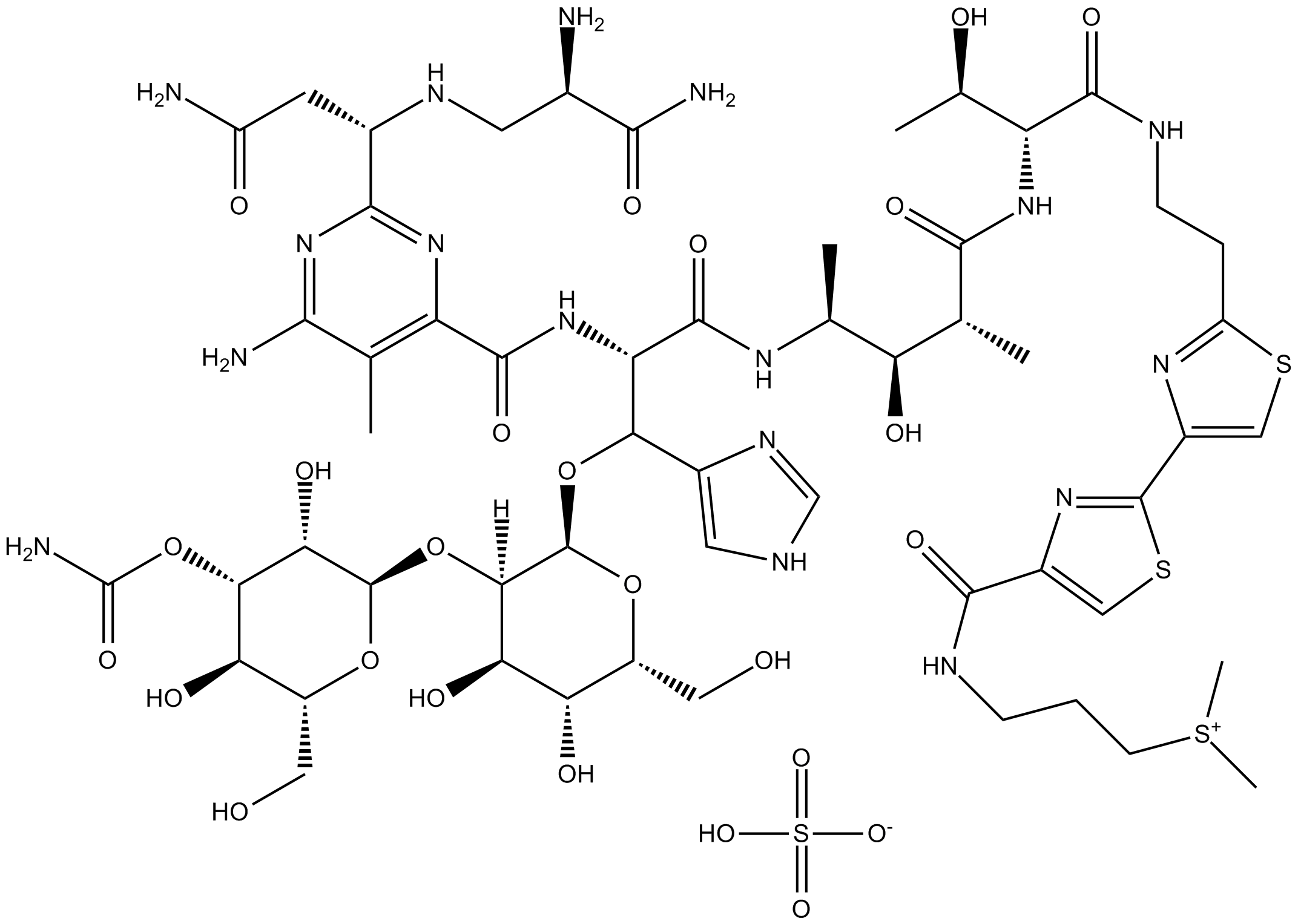 A8331 Bleomycin Sulfate1 CitationSummary: Chemotherapy agent, induces DNA strand break
A8331 Bleomycin Sulfate1 CitationSummary: Chemotherapy agent, induces DNA strand break -
 A8437 Gemcitabine1 CitationSummary: inhibitor of DNA synthesis
A8437 Gemcitabine1 CitationSummary: inhibitor of DNA synthesis -
 A8405 Cytarabine1 CitationSummary: cytotoxic agent, blocks DNA synthesis
A8405 Cytarabine1 CitationSummary: cytotoxic agent, blocks DNA synthesis -
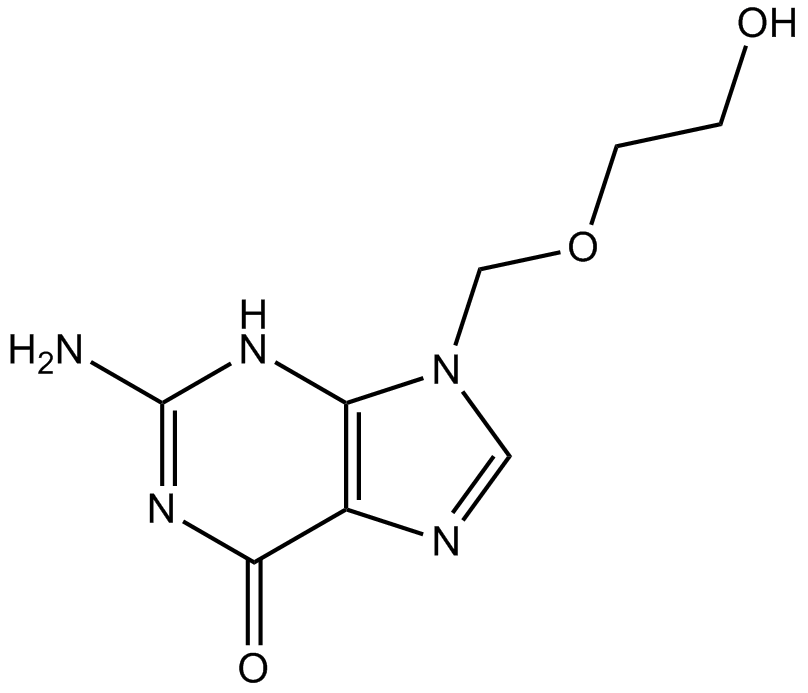 A8644 AcyclovirTarget: HSVSummary: Antiviral agent
A8644 AcyclovirTarget: HSVSummary: Antiviral agent -
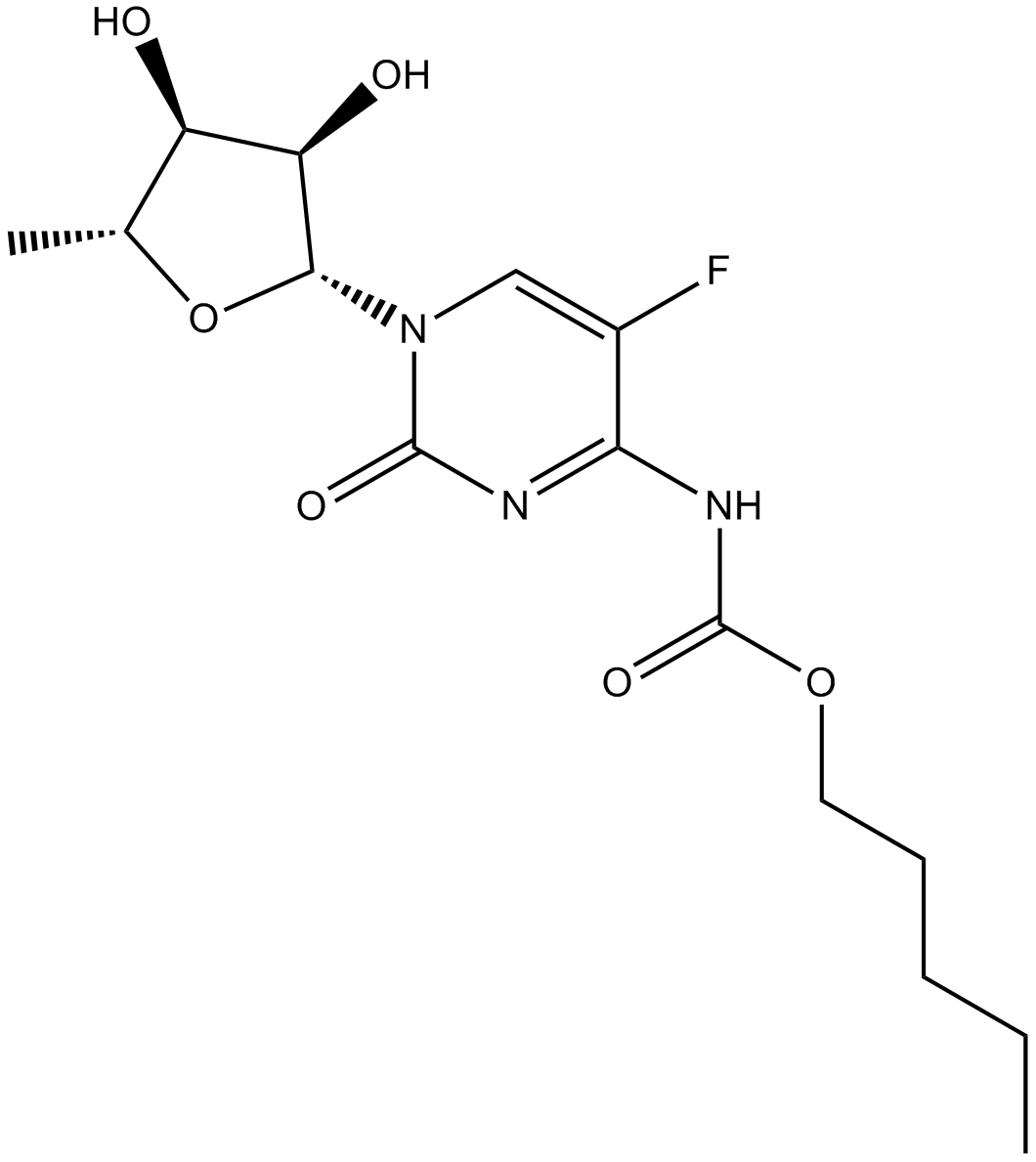 A8647 CapecitabineSummary: DNA, RNA and protein synthesis inhibitor
A8647 CapecitabineSummary: DNA, RNA and protein synthesis inhibitor -
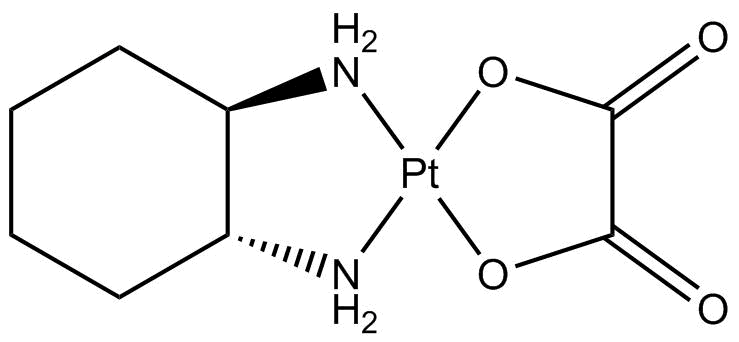 A8648 Oxaliplatin3 CitationSummary: Antitumor agent
A8648 Oxaliplatin3 CitationSummary: Antitumor agent -
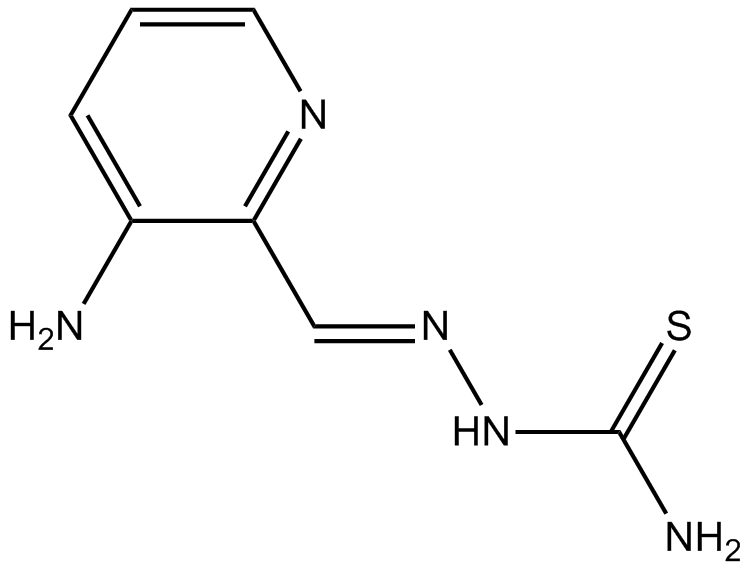 B3209 TriapineTarget: Ribonucleotide ReductasesSummary: Ribonucleotide reductase inhibitor
B3209 TriapineTarget: Ribonucleotide ReductasesSummary: Ribonucleotide reductase inhibitor -
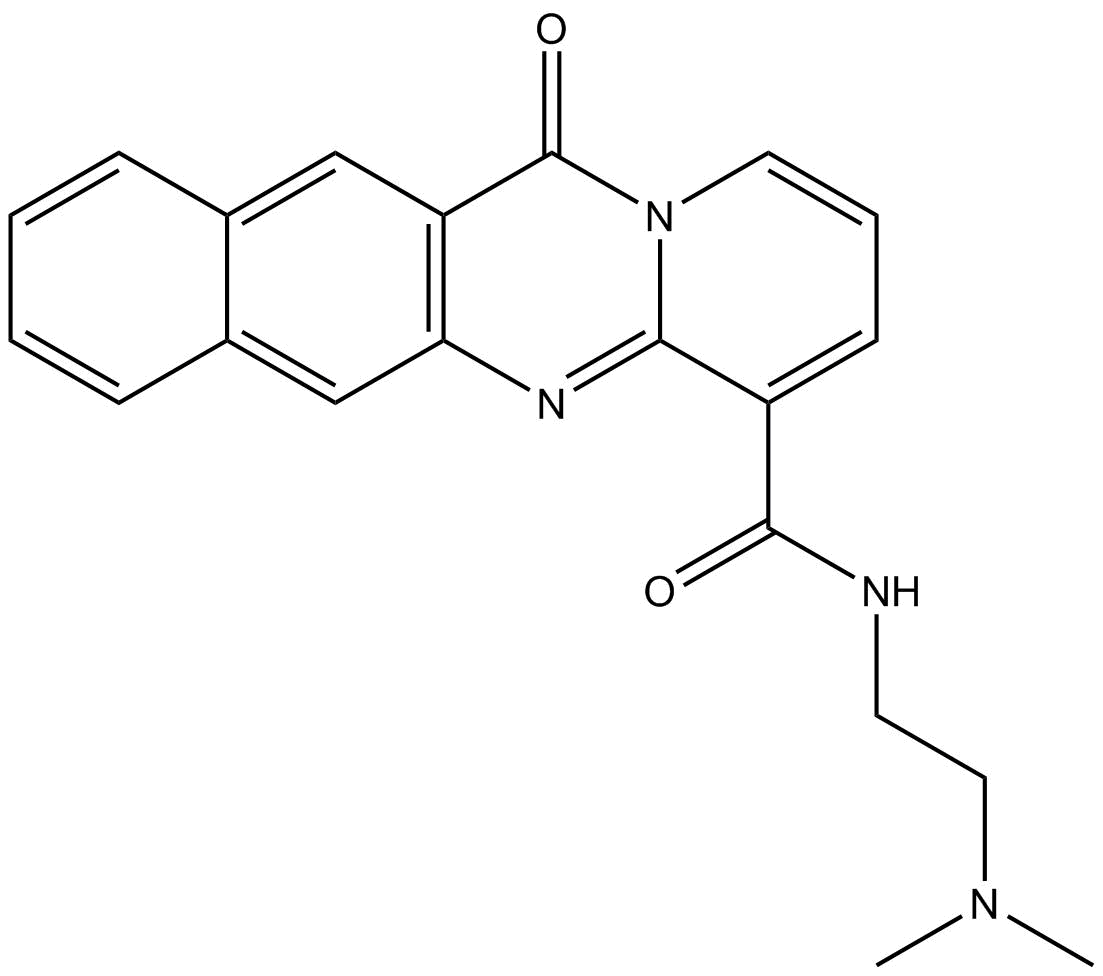 B4896 BMH-21Target: RNA PolymerasesSummary: RNA polymerase I Inhibitior
B4896 BMH-21Target: RNA PolymerasesSummary: RNA polymerase I Inhibitior -
 B1470 Procarbazine HClSummary: Antineoplastic chemotherapy drug
B1470 Procarbazine HClSummary: Antineoplastic chemotherapy drug -
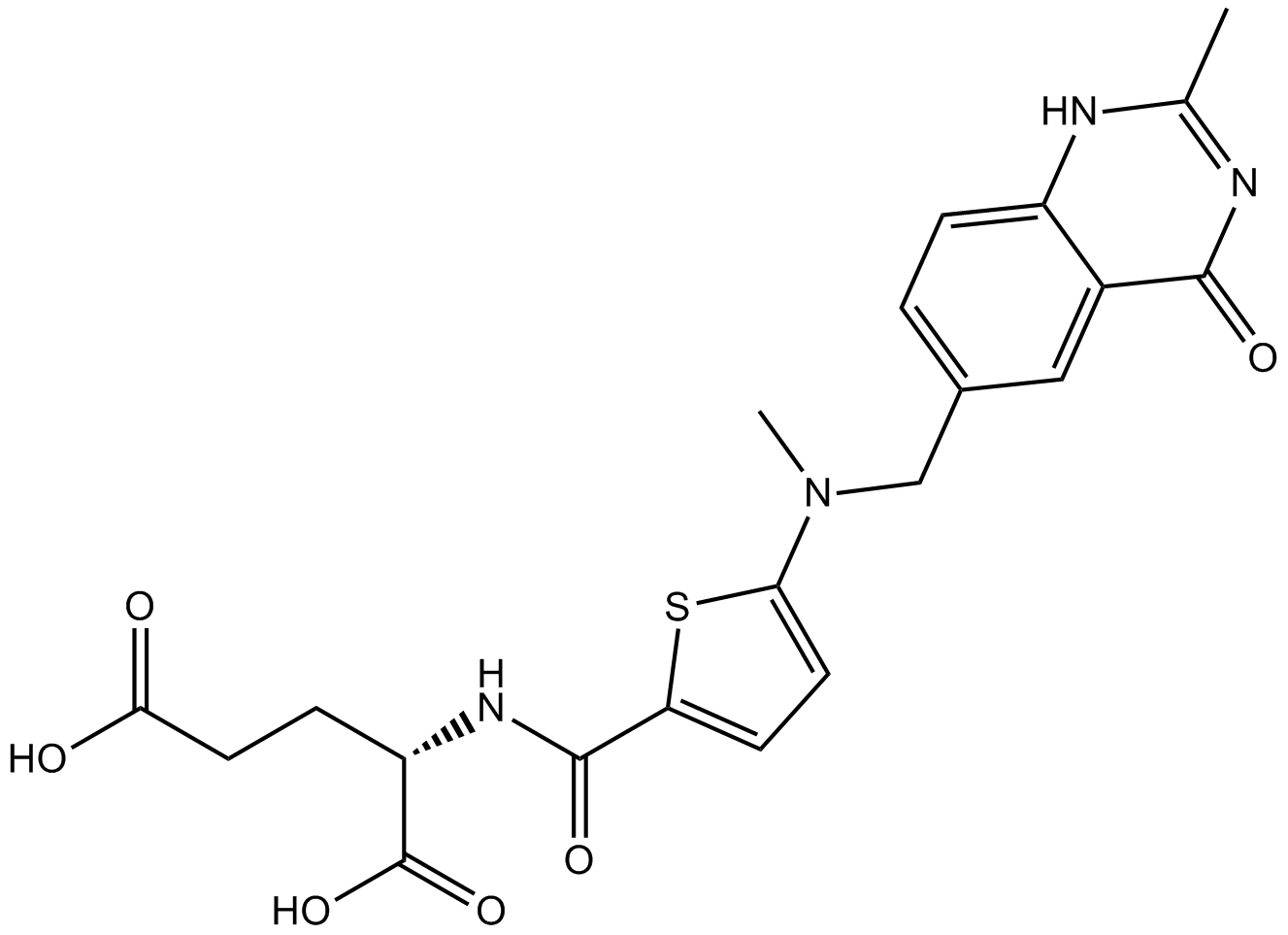 B1476 RaltitrexedTarget: Thymidylate SynthaseSummary: Thymidylate synthase inhibitor
B1476 RaltitrexedTarget: Thymidylate SynthaseSummary: Thymidylate synthase inhibitor

